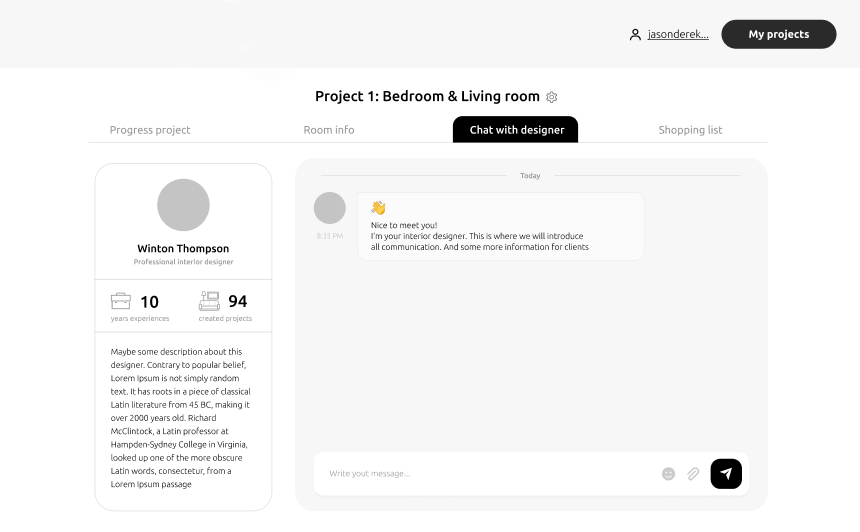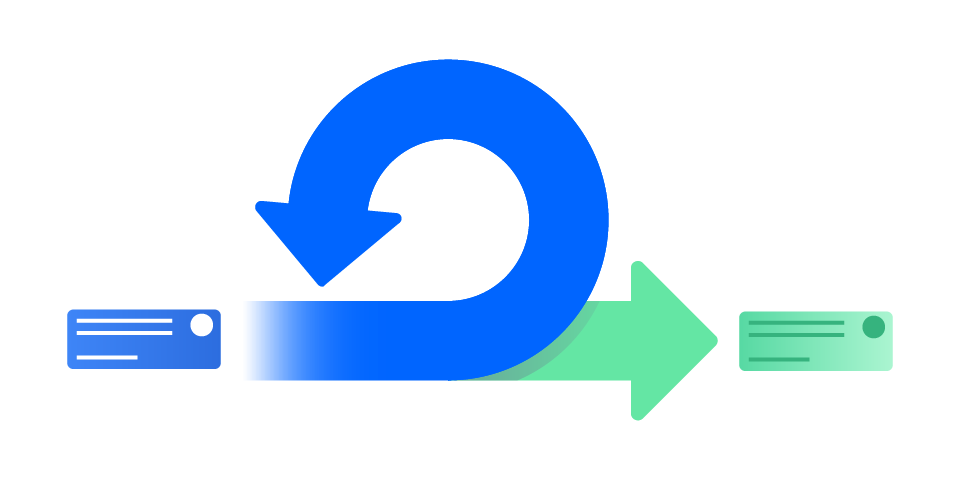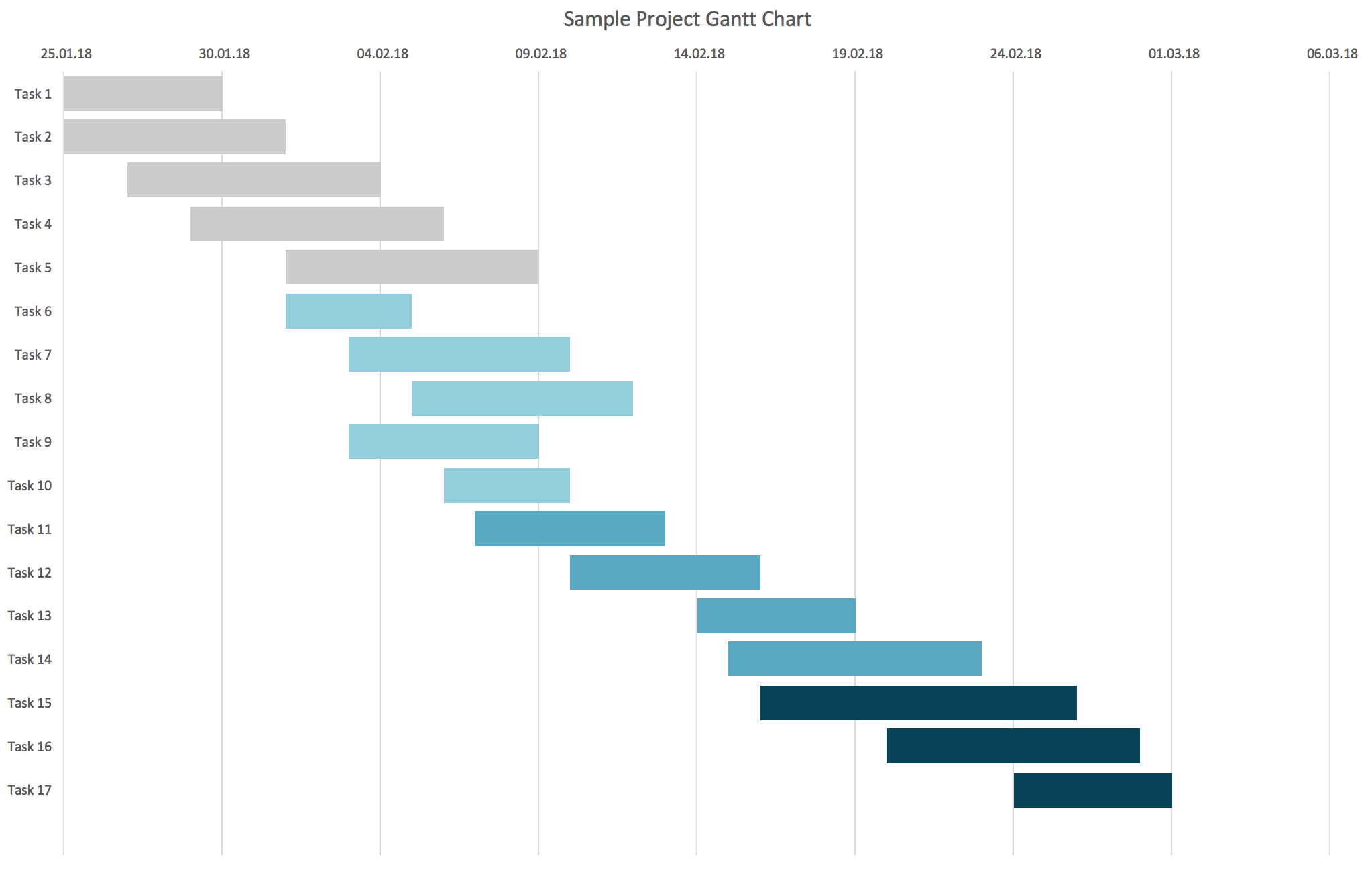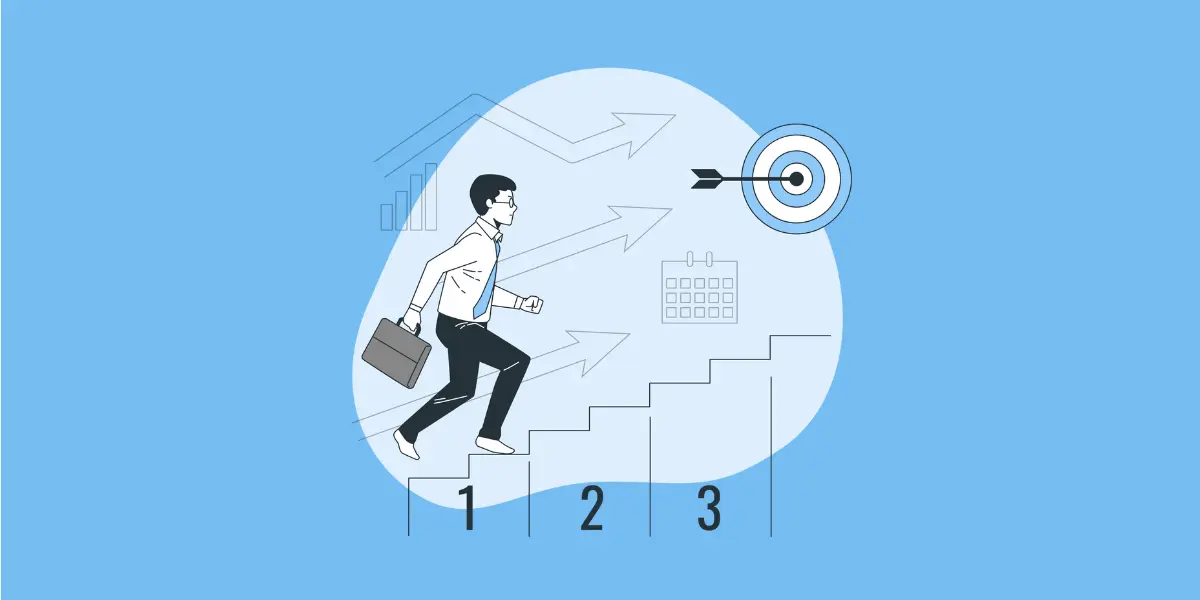The right foundation for the project is a critical factor when you plan to grow your customer base and scale the product in the future. Even if you’re starting with an MVP development – i.e. focus just on the core functionality instead of the full-blown project – the foundation you lay down in the very beginning will either save you from large expenses in the future or, vice versa, cost you a lot.
Learn more about MVP development.
The inception phase goal is to clarify the scope, project objectives, and solution feasibility.
In the dynamic world of HealthTech, where innovation meets intricate regulations and patient data privacy is paramount, a well-defined inception phase becomes more than just a project kick-off; it’s the cornerstone of success. Here’s why:
- Navigating the Regulatory Maze: Healthcare regulations are constantly evolving, and failing to factor them in from the outset can lead to costly roadblocks later. The inception phase allows for a thorough review of relevant regulations, ensuring your HealthTech project adheres to compliance standards right from the start.
- Data Privacy at the Forefront: Protecting patient data is a non-negotiable priority. The inception phase dedicates time to identifying and mitigating potential data security risks, ensuring your HealthTech solution safeguards sensitive information while fostering trust with patients and stakeholders.
- Stakeholder Alignment for Seamless Collaboration: Healthcare projects often involve a diverse range of stakeholders, from doctors and patients to administrators and regulators. The inception phase lays the groundwork for clear communication and early engagement with all stakeholders, fostering a collaborative environment that drives project success.
Building on this strong foundation, the following sections will explore the 7 steps of HUSPI’s inception phase, specifically tailored to the intricacies of HealthTech projects.
How much does the inception phase usually cost? At HUSPI, the cost of the inception phase is a fixed price of $5,000, including research, project architecture, and other deliverables. (We’ll stop by each of them further in the article.)
The client, business analysts, project managers, and developers get together to do the inception phase, which aims at working through the idea thoroughly, gathering requirements and expectations, assessing and identifying possible risks, and estimating the cost of the system development.
In this article, we’ll talk about the 7 steps of the Inception Phase we go through at HUSPI.
Is the inception phase necessary?
Because the inception phase is around $5,000, you might ask “Why would I do that when I can just get a free estimation and go on with our development?”
While it’s tempting to jump straight into development, the inception phase in healthtech projects is an invaluable investment. Here’s why:
Is an Inception Phase Right for Your HealthTech Project?
Think of the inception phase as laying the groundwork for a successful healthtech product. It’s especially crucial when your idea falls into one of these categories:
Early-Stage Vision
Imagine you have a broad idea like “a mental health app.” The inception phase helps refine this vision, define the target audience’s needs, and identify key functionalities.
Complex Functionality
Is your healthtech solution a complex platform connecting multiple healthcare providers? The inception phase ensures all integrations and functionalities are clearly defined, saving time and money during development.
Uncertain Scope
Are you unsure of the scale or specific features needed? This phase helps us map the project scope, prioritize features, and ensure it aligns with your business goals.
Benefits of a Tailored Inception Phase for HealthTech:
- Reduced Risk: By meticulously planning and defining requirements, we identify potential challenges early on, leading to a smoother development process.
- Increased Efficiency: A clear roadmap and defined functionalities ensure everyone is on the same page, avoiding costly rework throughout development.
- Focus on User Needs: The inception phase prioritizes understanding your target user’s needs, ensuring your healthtech solution is truly impactful.
- Informed Decisions: With a comprehensive cost estimation and feasibility analysis, you can make informed decisions about project scope and resource allocation.
Tailored Approach:
Not all healthtech projects require a full-blown inception phase. For a simple mobile app with a few well-defined features, we may recommend a more streamlined approach. However, a quick discussion with our project manager can help determine the best course of action for your specific needs.
Healthtech Inception Phase vs Other Industries
Healthcare and financial data are among the most personal data there is. However, while financial data is important, personal medical information is even more sensitive. Therefore, here’s what’s critical for healthtech projects to consider at the inception phase, compared to “simpler” projects:
Regulatory Landscape:
- Compliance Requirements: Healthtech solutions must comply with strict regulations (HIPAA, FDA) regarding data privacy and security. The inception phase needs to identify these regulations and how the product will adhere to them. (FYI: HUSPI has passed HIPAA compliance for one of our projects.)
- Data Security Measures: Protecting sensitive patient data is paramount. Inception focuses on defining robust security protocols and data encryption strategies.
User Focus & Impact:
- Understanding Patient Needs: Deeply understanding the specific needs and challenges faced by patients is crucial for creating a truly impactful healthtech solution.
- Stakeholder Involvement: Involving healthcare professionals (doctors, nurses) and patients early on ensures the solution aligns with their needs and workflows.
Integration & Interoperability:
- Existing Healthcare Systems: Many healthtech solutions integrate with existing Electronic Health Records (EHR) and other healthcare systems. The inception phase defines these integration points and ensures compatibility.
- Data Standards & Interoperability: Healthcare data often has specific formats and standards. The inception phase ensures the solution adheres to these standards for seamless data exchange.
Risk Assessment & Mitigation:
- Patient Safety: Healthtech solutions have a higher potential to impact patient safety. The inception phase focuses on identifying potential risks and developing mitigation strategies.
- Data Breach Implications: A data breach in healthtech can have severe consequences. The inception phase addresses potential vulnerabilities and security measures.
Additionally:
- Ethical Considerations: Healthtech solutions raise ethical questions regarding data ownership and patient privacy. The inception phase addresses these concerns and ensures ethical development practices.
- Scalability & Sustainability: Healthtech solutions might need to scale rapidly to meet demand. The inception phase needs to consider scalability and long-term sustainability.
By addressing these critical aspects in the inception phase, healthtech projects can ensure a smoother development process, minimize risks, and create solutions that have a positive impact on patients and the healthcare system as a whole.
Inception Phase Steps
During the inception phase at HUSPI, we focus on 7 major parts, which we’ll talk about below in greater detail:
- Stakeholder Needs: This phase prioritizes understanding the goals, expectations, and pain points of all stakeholders involved in the project.
- Wireframes and High-Level Architecture: Low-fidelity mockups and a general system blueprint are created to visualize the user experience and core functionalities.
- Solution Requirements: Specific features and functionalities needed to meet stakeholder needs are defined in detail.
- System Scope: Clear boundaries are established for the project to ensure it remains focused on delivering essential functionalities.
- Iteration Planning: The development process is broken down into manageable sprints, allowing for continuous improvement and feedback loops.
- Schedule: A realistic timeline for project completion is developed, considering resource allocation and dependencies.
- Cost Estimation: Based on the defined scope and schedule, a detailed cost estimate is created to manage project budget expectations.
Define Stakeholder Needs: The Power of “Why?”
Stakeholders are the people or groups of people who must be satisfied by the project and this may include anyone who is (or potentially will be) materially affected by the project’s success or failure. Most of the time, stakeholders for us are the clients who approach us with the initial idea.
As we mentioned above, the main reason for the inception phase is to clarify the idea and describe it in processes and features, so that it becomes more “solidified” in terms of its scope, boundaries, features, users, etc.
There are many ways to define stakeholders’ needs:
- Creating user stories to see the user journey and identify goals and gaps.
- Hosting brainstorming sessions to let everyone speak. You can stumble upon a feature or a constraint you’ve never considered before just because the creativity finally had a field day.
- Building process diagrams to go through the algorithms of the app or system’s work.
Use the children’s most powerful weapon: the question “Why?”
It’s easy to miss the obvious. We might think some things are clear as day, but do they make sense to the people actually using the system? Figuring this out upfront helps streamline things. We can ditch any unnecessary features and make sure the ones that stay have a clear purpose.
Build a Strong Foundation: Wireframes & High-Level Architecture
If you think good architecture is expensive, try bad architecture.
Brian Foote, Head of Business Planning & Platform at PlayStation
Before diving into the nitty-gritty of coding, we take the time to establish a solid foundation for your project. This involves two key steps:
- High-Level Architecture: Think of this as the blueprint for your system. It provides a bird’s-eye view of the major components – databases, servers, applications – and how they all work together. A well-designed architecture ensures scalability, meaning your system can easily adapt to handle more users or increase functionality in the future. (Learn more about high-level architecture in this post.)
- Wireframes are low-fidelity mockups that map out the user interface (UI) – the screens and buttons that users interact with. Wireframes are like rough sketches, focusing on the core layout and user flow. They help visualize how users will navigate through the system and complete tasks.
Benefits of this approach:
- Clear Communication: Wireframes and architecture diagrams allow everyone involved – developers, designers, and stakeholders – to be on the same page.
- Early Feedback: Stakeholders can provide feedback on the overall structure and user experience early in the process. This helps identify and address potential issues before significant coding begins.
- Efficient Development: A well-defined architecture guides the development process, making it more efficient and avoiding costly rework later on.

Define the Requirements for the Solution
During the brainstorming sessions and other meetings with the stakeholders, there will be a lot of features you will come up with. Now is the time to weed out the features that might not bring a lot of value and distract the users from the main business goal. Another reason to reduce the number of features and define the requirements is to avoid so-called “feature creep.”
Feature creep is a term that describes the situation when the app or web solution has so many features that users are not sure what is the main goal of the software and what are they supposed to do. This doesn’t mean the features are bad per se, but their amount or the badly thought-through user journey leads to user loss.
How do we define the requirements? There is a list of questions that can be used as a guide:
- How will you use this particular feature?
- What steps does the person need to take to use this feature? Where can the person find this feature?
- How can we meet this particular business need?
- Where does the process begin? What should have happened before? What would happen next?
- How do we know this process/feature is complete?
- Who will use this feature?
- Who will provide the data for this feature?
- Who will get the data from this feature?
- What needs to be tracked and measured?
- Where will the data be visible? Who will have access?
Besides these questions, consider brainstorming about the “What if…?” scenarios. What if… the person doesn’t have an Internet connection? What if… it rains? What if…?
Define the Scope of the System
The scope can be a tricky notion because there are two scopes to talk about:
- Product Scope
- Project Scope
| Product Scope | Project Scope |
|---|---|
| The WHAT | The HOW |
| Functionality and features that make up the product. | Work that is required to deliver the product, service, or result with the features defined in the product scope. |
| Completion is measured according to the requirements. | Completion is measured according to the PM plan. |
Simply speaking, we need to decide what goes in or out.
Now that we have talked about the requirements, features, functionality, and everything else, we need to clearly define the scope to prepare for the next stage: planning.
Provide the Basis for Planning Iterations
At HUSPI, we believe in a development methodology called Scrum. This framework emphasizes delivering value quickly and iteratively, ensuring your project stays on track and adapts to changing needs.
The Secret Sauce: Sprints
The core unit of development in Scrum is the sprint. Think of it as a focused burst of activity where a specific set of features is tackled and delivered.
The HUSPI Sprint Advantage:
- Optimal Length: We typically choose sprint lengths of one or two weeks. This sweet spot allows for:
- Detailed Planning: Enough time to meticulously plan and organize tasks within the sprint.
- Fast Innovation: Regular delivery cycles keep you updated on progress and allow for quick adaptation based on feedback.
Why Short Sprints?
Longer sprints, exceeding one month, can become unwieldy. Planning for such extended periods becomes challenging, and the benefits of rapid feedback cycles diminish.
Two Weeks: A Scrum Standard
Two weeks is a popular sprint length for many Scrum teams, and it’s also a common choice at HUSPI. However, the ideal sprint duration can vary depending on project complexity and team size. We work closely with you to determine the most effective sprint length for your specific needs.
The Benefits of Iterative Development:
- Early Feedback: Frequent deliverables within sprints allow for continuous feedback and course correction throughout the project.
- Reduced Risk: Breaking down development into manageable chunks minimizes the risk of major issues arising later in the development process.
- Increased Agility: Iterative development enables you to adapt to changing priorities or market conditions as needed.

Optimizing sprints requires a well-oiled system. Here at HUSPI, we take several key steps to ensure each sprint runs smoothly and delivers maximum value:
- Backlog Management: At the heart of Scrum lies the product backlog – a prioritized list of features and tasks that make up the entire project scope. We keep the backlog meticulously organized and updated, ensuring focus on the most critical tasks during each sprint.
- Sprint Planning: Every sprint kicks off with a dedicated planning session. This collaborative event involves the development team and stakeholders. Together, we define the specific goals and tasks to be tackled within the chosen timeframe.
- Sprint Review & Demo: As the sprint concludes, a review session is held. This provides a valuable opportunity to showcase the completed features to stakeholders and gather crucial feedback.
- Sprint Retrospective: No sprint is complete without a retrospective meeting. This introspective session allows the team to reflect on the past sprint, identify areas for improvement, and establish best practices for the next iteration.
By embracing iterations and sprints, HUSPI ensures a collaborative and efficient development process that delivers results quickly and keeps your project on the cutting edge.
Mapping the Course: Creating a Project Schedule
During the inception phase, we laid the groundwork for a comprehensive project schedule. This roadmap serves as a vital tool for keeping your project on track and hitting key milestones.
Building the Timeline:
Our approach involves the following steps:
- Identifying Milestones: The first step is to pinpoint key project milestones. These can be specific features, the completion of a group of tasks, or any other significant achievement along the development journey.
- Visualization: We then translate these milestones into a clear and concise timeline. Gantt charts are a popular tool for this purpose, as they offer a visual representation of tasks, dependencies, and their estimated durations.
Benefits of a Defined Schedule:
- Enhanced Transparency: A well-defined schedule provides all stakeholders with a clear understanding of project timelines and expectations.
- Improved Resource Allocation: By visualizing the project flow, we can effectively allocate resources to ensure timely completion of each task.
- Early Risk Identification: The scheduling process often reveals potential bottlenecks or dependencies that can be addressed proactively.
Setting Realistic Expectations:
It’s important to note that this initial schedule serves as a foundation. As with any project, unforeseen circumstances may arise. The beauty of Scrum’s iterative approach is that we can adapt the schedule as needed based on ongoing progress and feedback.
Staying on Track:
Throughout the development process, we continuously monitor progress and make adjustments to the schedule as required. This ensures that your project stays on target and delivers results within the agreed-upon timeframe.
For example, you can use Gantt charts for the visualization of your tasks.

Seeing the Bigger Picture: Project Cost Estimation
With the groundwork laid in the previous phases, it’s time to tackle a crucial element: cost estimation. This process involves carefully calculating the potential expenses associated with your project.
Why Cost Estimation Matters:
Having a clear understanding of potential costs is essential for informed decision-making. It allows you to:
- Set realistic budgets: Cost estimation helps establish a realistic financial framework for the project, ensuring you have the resources needed for successful completion.
- Identify potential risks: By analyzing projected costs, we can identify areas where potential cost overruns may occur. This allows for proactive mitigation strategies.
- Optimize resource allocation: Cost estimation informs us about the resources required throughout the project lifecycle. This helps us allocate budget and personnel effectively.
The HUSPI Approach:
Our cost estimation process involves:
- Factoring in Scope, Resources, and Timeline: We consider all crucial project aspects – features, functionalities, required resources (personnel, technology), and the defined timeline – to arrive at an accurate cost estimate.
- Transparent Communication: We believe in clear and transparent communication. Throughout the cost estimation process, we keep you informed and involved, ensuring all stakeholders are aligned with the projected budget.
Beyond the Numbers:
While a comprehensive cost estimate is crucial, it’s important to remember that it’s a starting point. As the project progresses, there may be unforeseen circumstances requiring adjustments. Our agile development methodology allows us to adapt the cost estimate as needed, ensuring budget transparency and project success.
Below you can see one of the examples of how an estimate might look like:

Transforming Ideas into Actionable Plans
The inception phase is the fertile ground where great product ideas take root and blossom into concrete development plans. It’s the crucial first step that bridges the gap between a spark of inspiration and a tangible reality.
From Vision to Roadmap. During this phase, we work closely with you to:
- Define Your Vision: We collaborate to refine your initial idea into a clear vision that outlines the product’s purpose and its impact on users.
- Scope It Out: We meticulously map out the product’s scope, ensuring it aligns with your business goals and delivers the most value to your target audience.
- Identify Your Users: We delve deep to understand the needs and expectations of the system’s users, ensuring a user-centric approach.
- Pinpoint Key Features: We work together to identify the core functionalities and features that will bring your vision to life.
- Craft the Architecture: We establish a robust technical foundation for your product, ensuring scalability and future-proofing your vision.
- Navigate the Feasibility Landscape: We assess the technological feasibility of your product, ensuring your vision can be translated into a successful reality.
- Chart the Course: We create a comprehensive project schedule, outlining milestones and timelines. Additionally, we identify potential risks and develop mitigation strategies.
- Cost Transparency: We provide detailed cost estimation, factoring in scope, resources, and timeline to give you a clear financial roadmap for your project.
Ready, Set, Develop!
As a result of the inception phase, you’ll get a clear roadmap for your product’s development. This roadmap encompasses your product vision, scope, functionality, architecture, feasibility, schedule, costs, and most importantly, a deep understanding of your target users.
Armed with this foundation, we’re ready to embark on the next exciting phase: the actual development of your product!
Wondering about time-to-value?
Request a no-obligation discovery call and receive a preliminary estimate tailored to your KPIs.
HealthTech Project Inception Phase Templates
You’ve reached the end of our article – we hope it was useful to you. Now you can dive deeper into the inception phase with our exclusive templates!
These resources will guide you through defining your healthtech vision, identifying user needs, and establishing a solid foundation for your project. Get your free templates now!
Detailed Project Estimation Example
Gain clear financial insights with a comprehensive Google Sheet prepared by our team. This tool visualizes potential expenses, empowering you to make informed budget decisions alongside HUSPI’s expertise.
System Requirements Document
Rest assured that all technical specifications are meticulously documented by HUSPI. You’ll receive a clear and concise document outlining your project’s functionalities.
Inception Phase Presentation
Make a compelling case for your healthtech vision. HUSPI will develop a comprehensive Inception Phase presentation, providing a framework to showcase key findings, goals, and the roadmap envisioned for your project.


